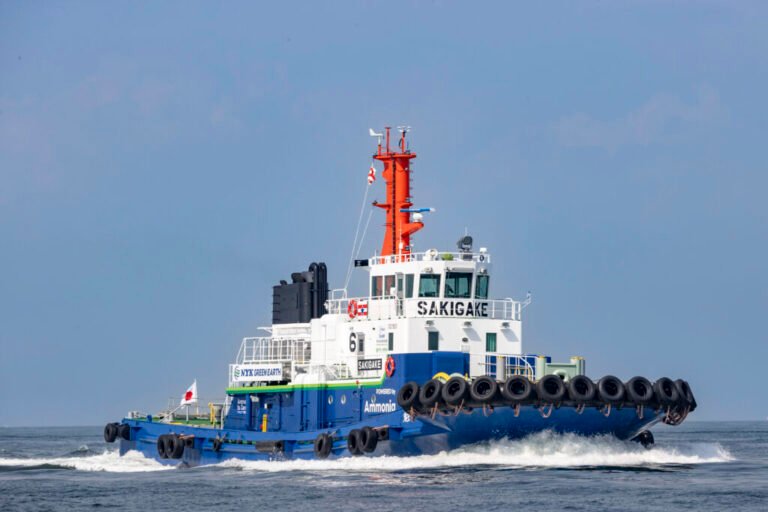The World’s First Commercial Ammonia-Fueled Vessel Achieves 95% Greenhouse Gas Emission Reduction
Tugboat Sakigake, the world’s first commercial-use ammonia-fueled vessel, has successfully completed its demonstration voyage with a remarkable greenhouse gas (GHG) emission reduction of up to approximately 95%, as reported by its operator, NYK Line.
The three-month demonstration voyage, which began after the tugboat was converted from LNG to an ammonia-fueled vessel in August 2024, showcased the significant impact of this innovative technology on reducing emissions.
The conversion project was a collaborative effort between NYK, IHI Power Systems (IPS), and ClassNK as part of a Green Innovation Fund Project under Japan’s New Energy and Industrial Technology Development Organization (NEDO).
During the demonstration period in Tokyo Bay, Sakigake demonstrated impressive performance in tugboat operations, with ammonia co-firing and GHG reduction rates consistently exceeding 90% and reaching approximately 95% across various main engine load ranges.
This successful trial reaffirmed the potential of ammonia as a viable and promising next-generation fuel for vessels, marking a significant milestone in the maritime industry.
Looking ahead, NYK plans to continue utilizing Sakigake for tugboat operations in Tokyo Bay to further enhance their understanding of the development and operation of ammonia-fueled vessels.
Future Plans and Collaborations
Additionally, NYK, Japan Engine Corporation, IPS, and Nippon Shipyard are collaborating on the development of an ammonia-fueled ammonia gas carrier, scheduled for delivery in November 2026 as part of NEDO’s Green Innovation Fund Project.
The 40,000 cubic meter type ammonia fuel ammonia carrier will be constructed at the Japan Marine United Corporation (JMU) Ariake Shipyard, further advancing the use of sustainable fuels in the maritime sector.
Upon completion, the consortium plans to operate the vessel for demonstration purposes, evaluating its performance, environmental friendliness, and operational feasibility to provide valuable feedback for future improvements in shipbuilding and marine equipment manufacturing.
With these groundbreaking initiatives and collaborations, the maritime industry is taking significant strides towards a more sustainable and environmentally friendly future, setting new standards for vessel operations and emissions reduction.

